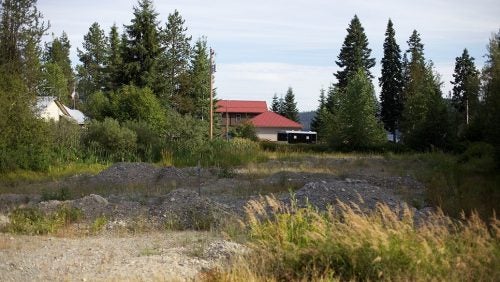Rethinking Water: Supreme Court Revisits Sackett
February 2, 2022 by Priya Sinha

Photo of the Sackett's Property
On Monday, January 24, 2022, the Supreme Court granted review of Sackett v. EPA to determine the definition of a “water of the United States,” or WOTUS, under the Clean Water Act (CWA). The outcome of the case could potentially reshape the reach of the Environmental Protection Agency’s (EPA) power under the CWA. The decision to hear the case has ignited concerns amongst environmentalists that the current Supreme Court could undermine the power of one of the nation’s most important environmental laws.[1]
History of the Case
Chantell and Michael Sackett have been fighting for the right to build on their land without obtaining costly EPA permits for several years.[2] Initially, the Sacketts filed suit in district court against the EPA under the Administrative Procedure Act (APA), seeking injunctive and declaratory relief to prevent compliance with an EPA Order.[3] The Order stated that in 2007, the Sacketts placed dirt and rock on their land in violation of the CWA because their land contained navigable waters subject to the CWA, and they did not obtain the appropriate permit first.[4] In 2012, the Supreme Court sided with the Sacketts, granting them the ability to proceed with judicial review under the APA. Now, the Sacketts are calling on the Supreme Court to resolve the definition of WOTUS in the CWA.[5] In Rapanos v. United States, the Court split 4-1-4 on what the correct definition of WOTUS is, and as a result, two competing definitions currently exist.[6]
Two Contending Tests to Define WOTUS
In Rapanos, former Justice Anthony M. Kennedy proposed the “significant nexus” test to define WOTUS. The “significant nexus” test states that a water or wetland constitutes “navigable waters” under the CWA if the water has a “‘significant nexus’ to waters that are navigable in fact or that could reasonably be so made.”[7] Conversely, former Justice Antonin Scalia laid out a test in Rapanos stating that “only those wetlands with a continuous surface connection to bodies that are waters of the United States in their own right are adjacent to such waters and covered by the CWA.”[8] The Sacketts are arguing for an adaptation of Justice Scalia’s narrower test.[9]
Since the Rapanos decision, federal courts have generally used Justice Kennedy’s “significant nexus” test, which provides the CWA with a broader scope of authority.[10] The “significant nexus” test is also the one adopted by former President Obama’s Clean Water Rule in 2015.[11] The Trump administration, by contrast, used Scalia’s test in its Navigable Water Protection Rule.[12] Since then, the U.S. District Court for the District of Arizona vacated and remanded the Trump Administration’s Navigable Water Protection Rule,[13] and the Biden Administration is planning to issue a new regulation to define WOTUS.[14] Notably, the Biden Administration had asked that the Supreme Court reject the Sacketts’ petition, since it was planning on issuing a rulemaking on the matter.[15]
The Future of the CWA
The future of the CWA is uncertain. Democrats and climate activists argue that that the Court should maintain the EPA’s current authority.[16] Others think that the Court should adopt Scalia’s more rigid test in order to respect property rights.[17] Several justices on the current Supreme Court have demonstrated skepticism towards the administrative state and may move to limit the power of the EPA by adopting Scalia’s test.[18] It is also possible that the conservative Court will limit the scope of CWA to counteract President Biden’s climate agenda.[19]
The timing of the decision is also crucial. If the Court issues its decision before the Biden administration’s rulemaking on the matter, the EPA will have to act consistently with the Supreme Court’s ruling.[20] On the other hand, in the Rapanos decision, Chief Justice John Roberts stated that he would have afforded the EPA Chevron deference if it had a rule in place at the time.[21] Either way, the arguments for Sackett v. EPA are scheduled to be heard next term, so a decision will likely be issued in 2023.[22]
[1] Maxine Joselow, The Supreme Court takes on the nation’s bedrock environmental laws, Wash. Post (Jan. 25, 2022, 8:02 AM), https://www.washingtonpost.com/politics/2022/01/25/supreme-court-takes-nation-bedrock-environmental-laws/.
[2] Hannah Northey & Pamela King, Supreme Court tees up fight that could cuff EPA, Greenwire (Jan. 24, 2022, 1:32 PM), https://www.eenews.net/articles/supreme-court-tees-up-wetlands-fight-that-could-cuff-epa/.
[3] Sackett v. EPA, 566 U.S. 120, 120 (2012).
[4] Id.
[5] Northey & King, supra note 2.
[6] Rapanos v. United States, 547 U.S. 715 (2006).
[7] Id. at 717.
[8] Id. at 715.
[9] Joselow, supra note 1.
[10] Northey & King, supra note 2.
[11] Northey & King, supra note 2.
[12] Northey & King, supra note 2.
[13] The Navigable Waters Protection Rule: Definition of “Waters of the United States” 85 Fed. Reg. 22,250 (Apr. 21, 2020).
[14] Northey & King, supra note 2.
[15] Northey & King, supra note 2.
[16] Joselow, supra note 1.
[17] See Supreme Court Will Consider Limiting Reach of Clean Water Act, Bloomberg law (Jan. 24, 2022, 9:34 AM), https://news.bloomberglaw.com/environment-and-energy/supreme-court-will-consider-limiting-reach-of-clean-water-act.
[18] Joselow, supra note 1.
[19] Joselow, supra note 1.
[20] Northey & King, supra note 2.
[21] Rapanos, 547 U.S. at 757-58 (Roberts, J., concurring).
[22] Northey & King, supra note 2.

